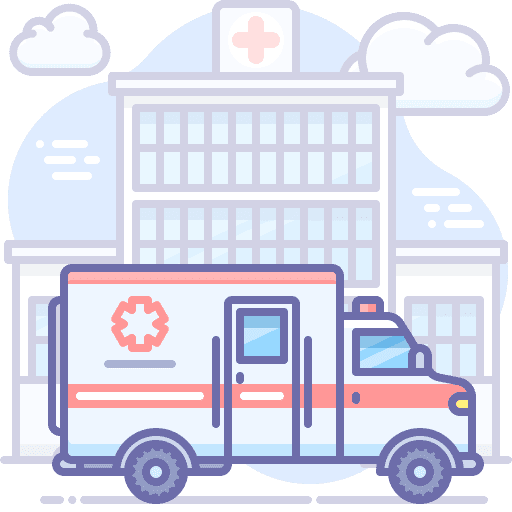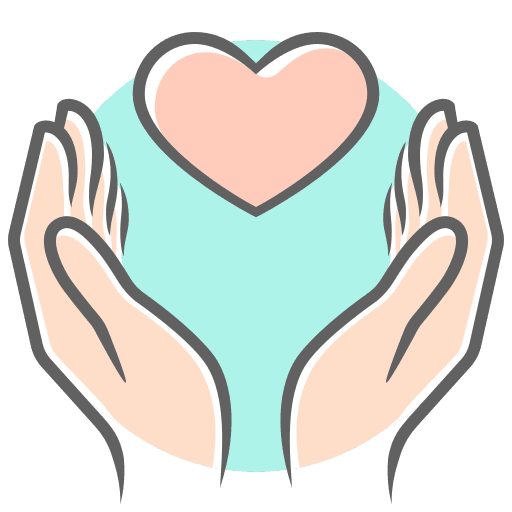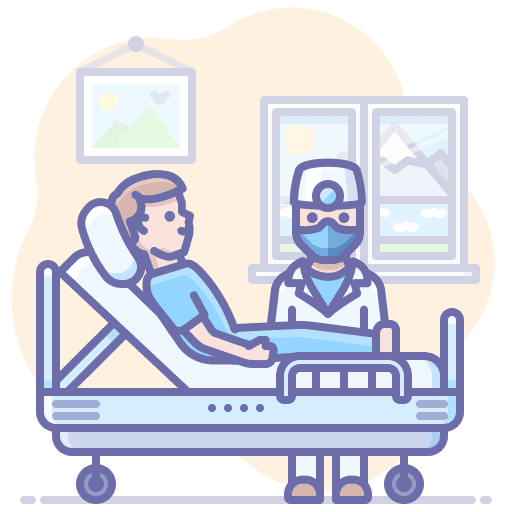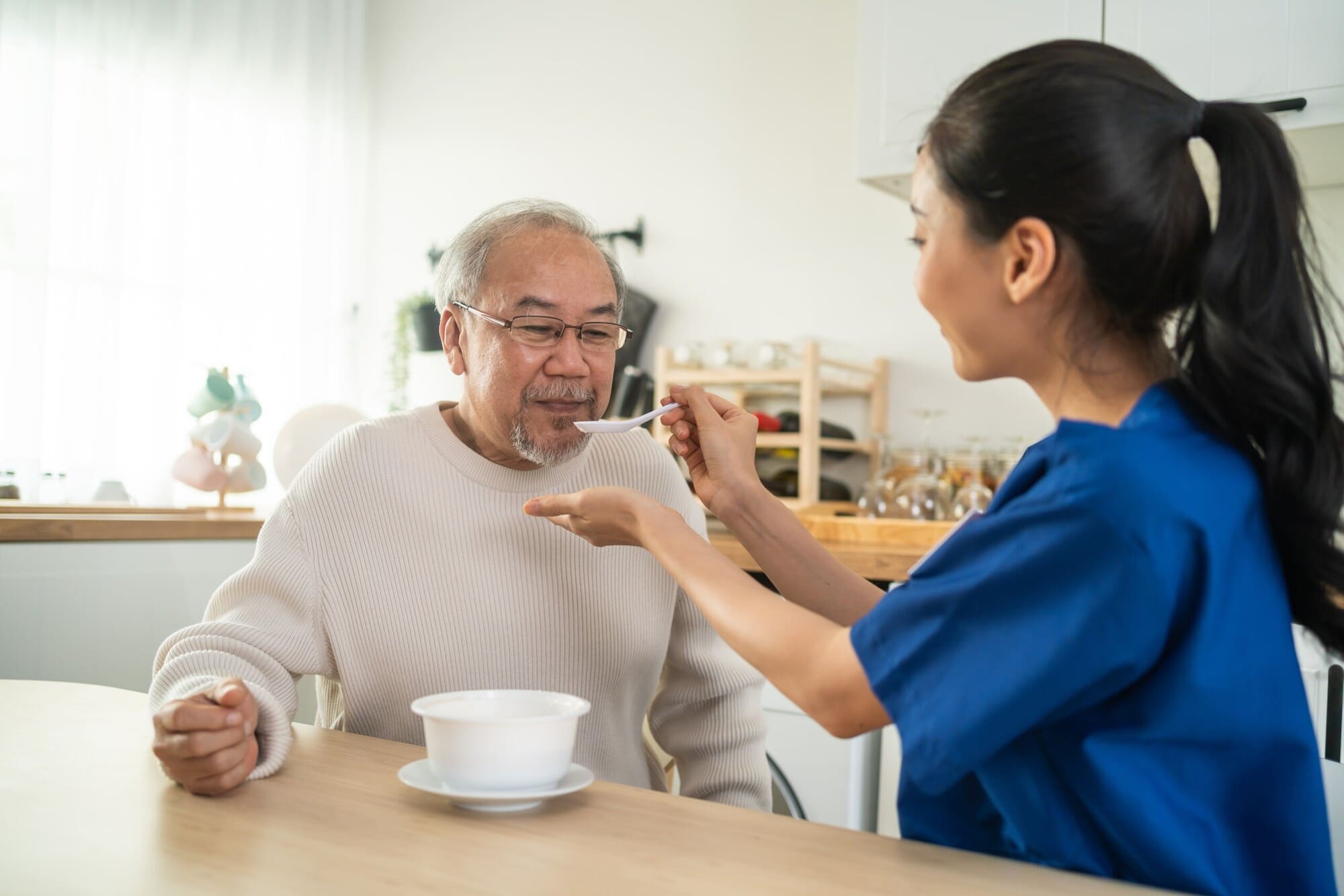In this Care Certificate Guide Standard 8
After reading this Care Certificate Standard 8 – Fluids and Nutrition, you should be able to:
- Understand the principles of hydration, nutrition and food safety.
- Support individuals to have access to fluids, food and nutrition in accordance with their plan of care.
The Care Certificate Standards detail what you must achieve and be assessed against to meet these learning outcomes.
If you have any concerns or queries, you should discuss these with your employer and/or assessor.
The Importance of Introduction to Fluids and Nutrition
Our health and wellbeing, and how we look, feel and function, is dependent on what we eat.
People you care for and support must have a diet that is:
- Safe for them to eat.
- Possesses all of the nutrients they require.
If individuals do not get the correct amount of nutrients from their diet, it can result in malnutrition.
If they do not drink enough fluids, it can cause dehydration. These are serious conditions for individuals of any age, but more so for the vulnerable, i.e. the elderly or sick.
Malnutrition and Dehydration
According to the British Dietetic Association (BDA), malnutrition is a major public health issue, which costs the NHS over £19 billion per year in England alone.
According to NHS England nutrition and hydration guidance:
- Malnutrition is common in the UK, affecting more than three million people at any one time.
- Around 1 in 3 patients admitted to acute care will be malnourished or at risk of becoming so.
- 35% of individuals admitted to care homes will also be affected.
- 93% of those at risk of or suffering from malnutrition will be living in the community.
- The scale of dehydration in the UK is unknown but is associated with a number of known causes of harm to people.



Food Safety Legislation
Food safety is of paramount importance when preparing and handling food, as contamination can cause severe illness and harm.
The requirements of the Food Safety Act 1990, and associated food hygiene legislation, must be met where food is:
- Handled.
- Stored.
- Prepared.
- Delivered.
The Care Quality Commission (CQC) reinforces this legal requirement when providing food to individuals in health and social care environments.
If your health and social care role requires you to prepare or handle food, you must possess the knowledge and skills to uphold food safety and hygiene. Your manager will identify any training that you will need to achieve this.

Importance of Food Safety
The Food Standards Agency (FSA) is an independent government department, which works to protect public health and consumers’ wider interests in relation to food in England, Wales and Northern Ireland.
The latest FSA research estimates that there are:
- 2.4 million cases of foodborne illness occurring every year in the UK.
- 380,000 cases of norovirus occurring every year in the UK, which are linked to food.
A study carried out by the FSA in 2014 also highlighted the following:
- After poultry, produce including vegetables, fruit, nuts and seeds caused the second-highest number of illness cases (an estimated 48,000 cases), while beef and lamb were third (an estimated 43,000 cases).
- There are more than 500,000 cases of food poisoning a year from known pathogens. This figure would more than double if it included food poisoning cases from unknown pathogens.
- Campylobacter was the most common foodborne pathogen with about 280,000 cases every year.
- The next most common pathogen was Clostridium perfringens with 80,000 cases, and norovirus was third with an estimated 74,000 cases.
- Salmonella is the pathogen that causes the most hospital admissions – about 2,500 each year.
- Poultry meat was the food linked to most cases of food poisoning with an estimated 244,000 cases every year.
All About Food Safety in Health and Social Care
Food safety is of paramount importance when preparing and handling food.
There may be substances and objects that are not visible in food but can cause harm or illness to an individual. If they eat contaminated food, they can become ill; even if it looks safe to eat and tastes normal.
You should always ensure that food is safe to eat regardless of whether you are making a snack for an individual, such as a sandwich, or are regularly preparing meals.
Food can be contaminated, which means it can become dirty, infected, unclean or polluted.
To prevent harm or illness to individuals, food should be prepared and stored in ways that prevent it from becoming contaminated.
Contaminants are also known as food hazards, and these could be:
- Bacterial.
- Physical.
- Chemical.
- Allergenic.
Physical Hazards
Physical hazards are foreign materials and objects that could be in bought food or introduced when preparing food.
These types of contaminants can cause:
- Cuts to the mouth and gums.
- Damage to teeth.
- Injury to the throat, oesophagus (food pipe), stomach and intestines. Some people may require surgery to remove the object.
- Choking, which can be fatal.
There are two main groups of physical hazards:
- Natural – These are naturally occurring physical hazards, e.g. fruit stones and pips, bones in meat and fish, and shells from nuts.
- Unnatural – These are more dangerous and should not be in food, e.g. stones, human hair, jewellery, glass or bits of packaging.
You should always check for physical hazards as far as is possible.


Chemical Hazards
These hazards can be naturally occurring, or they can be human-made. They are sometimes added intentionally for taste and preservation purposes, e.g. sodium nitrates.
Some chemicals can also be added unintentionally, which can contaminate food, e.g.:
- Pesticides and weedkillers on fresh fruit, salad and vegetables.
- Cleaning chemicals accidentally sprayed onto prepared foods or residues left on surfaces.
- Video clips.
- Internet research.
- Mobile phone apps.
Chemicals can be harmful if eaten. Always:
- Remove cleaning product residues from surfaces before preparing food.
- Wash fruit, salad and vegetables before preparation.
- Avoid spraying cleaning products near food.
Allergenic Hazards
These hazards are caused by allergens in the foods we eat, e.g. nuts, eggs, shellfish, gluten and milk. Allergens are proteins that can cause severe and dangerous reactions in some people.
When someone eats a food that contains an allergen that they are allergic to it produces an abnormal immune response in the body.
This response can result in mildly irritating symptoms for some people, e.g. an itchy skin rash, breathing problems and/or stomach cramps with vomiting or diarrhoea.
However, in others, it can trigger anaphylaxis which can be a life-threatening reaction. Allergic reactions must not be confused with food intolerances.
Foods that contain allergens should always be prepared and stored separately to those which don’t.
Allergens
On 13th December 2014, legislation came into force that sets out how food businesses deal with allergen information, and it applies to all organisations that provide food. The legislation also applies to care and healthcare providers covering pre-packed and non-prepacked foods.
There is a legal requirement for providers to warn consumers if foods contain any of the 14 allergenic substances.
The 14 main allergens that are covered by the legislation are:
- Celery.
- Cereals containing gluten – including wheat (such as spelt and Khorasan), rye, barley and oats.
- Crustaceans – such as prawns, crabs and lobsters.
- Eggs.
- Fish.
- Lupin.
- Milk.
- Molluscs – such as mussels and oysters.
- Mustard.
- Tree nuts – including almonds, hazelnuts, walnuts, brazil nuts, cashews, pecans, pistachios and macadamia nuts.
- Peanuts.
- Sesame seeds.
- Soybeans.
- Sulphur dioxide and sulphites (if they are at a concentration of more than ten parts per million).
Further information on allergen guidance.
Anaphylaxis
As you have learned, when someone eats a food that contains an allergen that they are allergic to, it produces an abnormal immune response in the body.
This response can result in mildly irritating symptoms for some people. In others, it can trigger anaphylaxis which is a severe life-threatening reaction and a medical emergency.
The symptoms of food-induced anaphylaxis tend to come on and get worse quickly.
Examples of symptoms are:
- Breathing difficulties.
- Wheezing.
- Increased heart rate.
- Clammy skin.
- Collapsing and unconsciousness.
- Dizziness or lightheadedness.
- A sense of impending doom, confusion and anxiety.
- Other allergy symptoms, e.g. an itchy raised rash (hives), feeling or being sick, swelling or stomach pain.
Anaphylaxis is often referred to as anaphylactic shock. Both refer to a severe allergic reaction, but there are differences. Shock is when a person’s blood pressure drops so low that their cells and organs don’t get enough oxygen. Anaphylactic shock is a shock caused by anaphylaxis.
The precautions and actions to take regarding individuals who have food allergies, should be detailed in their care plan. You must always follow their care plan.
Bacterial Hazards
These hazards are also known as biological or microbiological, and they occur when microorganisms contaminate food. Microorganisms are living organisms that are so small and are only visible through a microscope.
Bacteria are microorganisms, and some of them are pathogenic, which means that these are harmful germs. Once a person eats contaminated food, the bacteria can enter the body and grow or multiply to harmful levels if the conditions are right. This can cause infection and illness.
Pathogenic microorganisms can be found in:
- Raw foods that require cooking to remove the pathogens.
- The human gut, nose and mouth.
The bacteria can be transferred to food during storage, handling and preparation processes. Always follow effective food safety principles properly to remove these risks.
Vulnerable Groups
There are some groups of individuals who have an increased vulnerability to food-related illnesses.
This is usually due to their weakened immune systems. For a variety of reasons, they are more likely to:
- Be affected, as a smaller number of bacteria can cause illness.
- Experience more severe symptoms.
Vulnerable groups can include:
- Babies, toddlers, children and teenagers – people’s immune systems develop throughout their lives. Therefore, they become more immune to germs as they get older.
- Pregnant and breastfeeding women – iron and zinc are important for immunity, which can be depleted during pregnancy and breastfeeding.
- Elderly people – as people age, their immune systems become less effective in detecting contaminated food.
- Those living on a low income – affording a healthy and balanced diet can be difficult for those who have limited finances.
- People in prison – can be exposed to infectious diseases, such as tuberculosis and hepatitis C.
- People in hospital – illnesses and some types of medication can weaken the immune system, e.g. chemotherapy.

Preparing Food Safely
Precautions must be taken to ensure that any food given to individuals is safe for them to eat.
When handling, storing or preparing food, you should protect individuals by keeping the following basic principles in mind:
- Remove jewellery before preparing food.
- Wash your hands thoroughly before touching food.
- Wash equipment in hot water between uses.
- Ensure food is cooked thoroughly.
- Store food in sealed containers and keep it cool.
- Food stored in a fridge should be labelled, dated and kept at 5ºC.
- Store raw meat below cooked food.
- Prepare raw and cooked foods separately.
- Equipment should be washed in hot soapy water or dishwasher if available.
You will now look at these principles in further detail.
Basic Principles – Jewellery and Handwashing
Remove jewellery before preparing food:
- Jewellery can cause physical contamination of food during preparation, especially if small items fall in.
- Jewellery can hinder effective handwashing, which means the removal of fewer bacteria.
Wash your hands thoroughly before touching food:
- Microorganisms such as bacteria can be present on people’s skin and contaminate food, particularly during preparation.
- Washing hands properly before food handling helps to remove these microorganisms.
Basic Principles – Washing Equipment and Cooking
Wash equipment in hot water between uses:
- Contaminants will not be removed effectively from equipment by wiping alone.
- Washing equipment properly in hot soapy water between uses will effectively remove microorganisms and allergen traces.
Ensure food is cooked thoroughly:
- Microorganisms, such as bacteria, are destroyed by high temperatures.
- Cooking food at the correct temperature will kill the bacteria present and ensure it is safe to eat.
Basic Principles – Storing Food
Store food in sealed containers and keep it cool:
Using sealed containers to store food will prevent accidental contamination, e.g. by objects, chemicals or allergens.
Food stored in a fridge should be labelled, dated and kept at 5ºC:
- Storing food at the correct temperature will keep it out of the danger zone, i.e. it slows down the multiplication of bacteria.
- Food should be correctly labelled and used within the use-by dates to ensure it is safe to eat.
Store raw meat below cooked food:
- Raw food can drip juices, contaminated with bacteria, onto food that is stored underneath. If the food stored below is not going to be heated, e.g. salad or cooked foods, the bacteria will not be destroyed before it is consumed.
- Raw meat should always be stored below cooked and ready-to-eat foods.
Basic Principles – Preparing Food and Washing Equipment
Prepare raw and cooked foods separately:
- To prevent contamination, raw foods should be prepared separately to cooked and ready-to-eat foods.
- If the same area has to be used, it should be thoroughly cleaned and disinfected after preparing raw food.
Equipment should be washed in hot soapy water or dishwasher if available:
- If possible, a dishwasher should be used, as it can achieve higher temperatures.
- Washing equipment in hot soapy water will remove bacteria. If temperatures are high enough, they will be killed.

All About Nutrition and Hydration for Wellbeing
A healthy and balanced diet will provide the nutrients an individual needs for their body to function properly. If their diet is unhealthy and does not include the right balance, it can lead to ill health and illness.
For individuals to remain healthy, they require a correctly balanced diet that includes:
- Carbohydrates.
- Vitamins.
- Minerals.
- Fibre.
- Protein.
Carbohydrates
Carbohydrates provide most of the energy individuals require, which includes energy for the basic actions that keep them alive (called the Basal Metabolic Rate), e.g.:
- Keeping the heart beating.
- Enabling breathing.
- Maintaining blood circulation.
- Production of hormones, enzymes and new tissues.
Examples of foods that can provide good sources of carbohydrates are:
- Bread.
- Potatoes.
- Rice.
- Pasta.
Vitamins and Minerals
Vitamins support various functions, such as:
- Blood clotting.
- Maintaining an effective immune system.
- Helping an individual’s body to absorb energy from different foods.
Examples of foods that can provide good sources of vitamins are fruit and vegetables.
Individuals also require minerals to stay healthy, which can include:
- Calcium, which helps to build strong teeth and bones.
- Iron, which enables the blood to carry oxygen around the body.
Examples of foods that can provide good sources of minerals are:
- Milk – products provide calcium.
- Shellfish and liver – are full of iron.
Fibre and Protein
Fibre is crucial in promoting a healthy bowel and assists in removing waste products from the body.
Examples of foods that are high in fibre are:
- Fruit.
- Vegetables.
- Wholemeal bread.
- Nuts.
- Seeds.
Protein is vital in repairing and replacing the body’s cells and tissues.
Examples of foods that can provide good sources of protein are:
- Beans.
- Milk products.
- Meat.
- Fish.

The Eatwell Guide
The Eatwell Guide is a UK healthy eating model developed by Public Health England. The guide replaced the Eatwell Plate on 17th March 2016.
The Eatwell Guide is based on the five food groups and shows how much of what you eat should come from each food group to achieve a healthy and balanced diet.
You don’t need to achieve this balance with every meal but try to get the balance right over a day or even a week.
The food groups include:
- Fruit and vegetables.
- Potatoes, bread, rice, pasta and other starchy carbohydrates.
- Oils and spreads.
- Dairy and alternatives.
- Beans, pulses, fish, eggs, meat and other proteins.
The Eatwell Guide – healthy Balanced Diet
For a healthy balanced diet, individuals should:
- Eat at least five portions of a variety of fruit and vegetables every day.
- Choose wholegrain or higher fibre versions of carbohydrates with less added fat, salt and sugar.
- Choose unsaturated oils and spreads, and use in small amounts.
- Choose lower fat and lower sugar dairy or dairy alternatives (e.g. soya drinks and yoghurts).
- Eat more beans and pulses, and two portions of sustainably sourced fish per week; one of which is oily (e.g. salmon or mackerel). Eat less red and processed meat.
- Eat foods that are high in fat, salt and sugar less often and in small amounts.
- Drink 6-8 glasses of fluids – water, lower-fat milk, sugar-free drinks including tea and coffee all count. Limit fruit juice and smoothies to a total of 150ml a day.
You should check the label on packaged foods and choose foods lower in fat, salt and sugar where possible.
The Importance of Fluids
Humans need fluids to survive and they are essential for life. If an individual does not have sufficient fluids, their body cannot carry out the basic processes needed to function correctly.
Some examples of these processes are:
- Digesting food and enabling the absorption of nutrients.
- Enabling the circulation of blood around the body.
- Removing waste products via urine and faeces.
- Keeping cells and tissues moist, which helps to avoid infection.
- Controlling body temperature by perspiration.
- Maintaining brain function.
Fluid Intake
The exact quantity of fluids an individual requires will be detailed in the care plan, and you must ensure that you refer to this when providing care and support.
You should also take the following into account:
- The recommended quantity of fluids for most individuals is about 1.5-2 litres of fluid each day or 6-8 cups or glasses.
- Some individuals with medical conditions will need to drink less, e.g. those with certain types of heart condition or kidney disease.
- There may be times when the individual must not eat or drink anything for a set period of time, e.g. before an operation. This is known as nil-by-mouth and will be clearly stated in their care plan.
The individual’s care plan must be followed for their safety.
Type of fluids
The type of fluids an individual has throughout the day is also important. When providing drinks, be mindful of the following:
- Water is the best fluid to rehydrate the body.
- Drinking significant amounts of alcohol can lead to dehydration.
- Other ordinary drinks will count towards an individual’s fluid intake, e.g.:
Fruit juices and smoothies (should be limited).
Milk and dairy alternatives.
Tea and coffee (in moderation).
Low-sugar or sugar-free drinks.
If an individual does not have enough fluids, they can become dehydrated.
Signs and Symptoms of Dehydration
When an individual is dehydrated, this means their body is losing more fluids than they take in.
Some of the early signs and symptoms of an individual being dehydrated are:
- Feeling thirsty as the body tries to increase fluid levels.
- Dark coloured urine as it tries to reduce fluid loss.
- Headaches, tiredness and confusion as the flow of blood to the brain decreases.
It is important to note that these signs might also indicate an undiagnosed health problem, e.g. type 2 diabetes.
Ongoing Dehydration
If dehydration is ongoing, it can contribute to:
- Constipation.
- Urinary tract infections, which are prevalent in some groups in care.
- Kidney stones and infections.
- Poor wound healing.
There are serious consequences for individuals if dehydration is not treated. It can affect their blood circulation and can also cause their kidneys to fail.

Poor Nutrition
In the UK, approximately a third of individuals admitted to hospital or care are malnourished or are at risk of acquiring the condition.
When an individual is malnourished, their diet does not have the correct balance of nutrients their body requires to function properly.
It can include:
- Under-nutrition – when a person does not get enough nutrients; or
- Over-nutrition – when a person has more nutrients than they require.
Signs and Symptoms of Malnutrition
Signs and symptoms can give those who work in health and social care clues that an individual may be suffering from malnutrition.
Some of the signs and symptoms of malnutrition include:
- Muscle weakness.
- Feeling tired all the time.
- Increased infections.
- More falls.
- Constipation.
- Lack of energy.
- Gaining or losing weight.
- Changes in behaviour.
- Depression.
- Poor wound healing.
Promoting Nutrition and Hydration
An assessment should be made regarding an individual’s nutrition and hydration when they are receiving any type of care or support, especially when it is long-term care.
An assessment should include information, such as:
- Whether they have any food allergies
- Their likes and dislikes regarding food and drink.
- Whether they need support to eat and drink.
- Whether they have their own teeth or dentures.
- Whether they can eat normally or require soft food.
Undertaking a thorough assessment of an individual’s needs will help promote adequate nutrition and hydration.
Providing Nutrition and Hydration in Person-centred Ways
You must work in person-centred ways to ensure that any food and drink provided is suitable and meets the individual’s unique needs.
Many different circumstances may affect the food and drink choices that an individual makes. You will have to balance these choices against the needs of the individual.
Beliefs or Preferences
It is important to consider whether the individual has beliefs or preferences that may affect the foods they want to eat, for example:
- Individuals may have certain religious needs, e.g. fasting, food restrictions and fluid restrictions on stimulants (caffeine and alcohol).
- Some individuals choose not to eat certain foods, e.g. vegetarians or vegans. It is vital that you know what this means and the differences, e.g. vegans do not eat dairy foods, eggs or honey.
- An individual will have likes and dislikes, e.g. some people like sweet foods, such as desserts, whereas others may prefer something savoury such as a cheese platter to finish a meal.
Remember not to make assumptions about an individual’s beliefs or preferences. Everyone is different; even how individuals can observe their religion can vary. Always ask the individual about their specific needs and preferences.
Health Conditions or Medication
It is important to consider whether there are any foods an individual should not have because of health conditions or medication, for example:
- Some individuals on certain medications for depression should not have cheese.
- Individuals with raised blood cholesterol levels may be advised not to have too much saturated fat such as butter, fried items and pastry.
- Individuals with diabetes may be encouraged to avoid too much sugar found in sweets, chocolate, sugared breakfast cereals, cakes and puddings, and encouraged to eat fewer of these or smaller portions.
- Those who have high blood pressure may be advised to limit salt intake.
- Anyone classed as obese should be encouraged to limit sugary and fatty foods.
Supporting Individuals to Eat and Drink
It is important to consider whether an individual needs support to eat and drink, for example:
- They may forget to eat (perhaps due to conditions, such as dementia).
- If they have arthritis in their hands, they may need assistance with cutting up food or opening packs like yoghurts.
- Their medication may cause side-effects, which may affect their appetite or cause sickness.Their false teeth may fit poorly.
- They may have a physical illness, such as a stroke, which may have affected the muscles around their mouth for chewing or their hand for lifting drinks.
- They may suffer from depression, which can cause poor appetite.
- They may have a visual impairment which affects the way they see their food to eat it.
Equipment to Support Eating and Drinking
Equipment can be used to support people in eating and drinking independently, for example:
- Technology, such as clocks and reminder messages, can let the individual know when to eat or drink.
- Cutlery with shaped and padded handles that help the individual to grip.
- Two-handled mugs that help individuals with poor grip, tremors or weak wrists.
- Cups with lids to reduce spillage risks.
- One-way straws that help individuals to drink and removes the need to lift cups and glasses. They are useful even if muscle weakness has reduced their ability to suck.
- Non-slip mats which prevent plates from moving when individuals are cutting food.
- Plates and bowls with high sides, which stop food falling off the edges.
- Insulated bowls which keep the food hot if the individual needs longer to eat.
Dignity, Respect and Raising Concerns
Individuals must be treated with dignity and respect. They should:
- Be allowed plenty of time to eat.
- Not be rushed.
- Be allowed to decide whether they want to use any equipment offered.
Compassion is one of the 6Cs. This means that all individuals should be treated in a compassionate way to help them maintain sufficient nutrition and hydration. Their needs should always be respected.
If there are any concerns about an individual not eating or drinking enough (regardless of them having encouragement and support), you should raise them with your manager. They may have to seek specialist advice, e.g. from a dietician or a nutritionist.
Additional Support
A specialist, such as a dietician or a nutritionist, can ensure that additional support is provided.
Additional support can include:
- Consulting with other workers, such as doctors, therapists or dentists.
- Closer monitoring of an individual’s nutrition and fluid intake.
- Speaking to the individual to determine if there are any barriers to eating and drinking.
- Highlighting the vital importance of good nutrition and hydration.
- Discussing the issue with the individual’s carer or family member.

Supporting Individuals and Their Care Plan
You have learned that it is vital to work in person-centred ways when providing nutrition and hydration. The individual’s needs and choices must be met wherever possible, and their care plan is a crucial part of recording and delivering this.
Supporting Good Hydration
To ensure that an individual is drinking sufficient fluids, you should follow their care plan. It will state how you can encourage and support them to meet their hydration needs.
Individuals should:
- Have continued access to fluids, unless there are restrictions for medical reasons.
- Be offered drinks to remind them of the need to hydrate.
- Be encouraged to drink throughout the day.
- Not wait until they feel thirsty, as this is an early sign of dehydration.
- Have their drinks regularly refreshed and should be within easy reach for those with restricted movement or mobility.
If you have any concerns regarding an individual’s fluid intake, you should report to:
- Your manager;
- Another senior member of staff;
- The individual’s carer; or
- The individual’s family.
Supporting Good Nutrition
Any food provided to an individual should be in line with their care plan. Their cultural preferences, health conditions and allergen advice must also be followed.
To help and support individuals with their food and nutrition needs, you should:
- Always apply food safety principles when storing, preparing and handling food.
- Encourage, help and support them to eat if stated in their care plan.
- Serve foods at the correct temperature and ensure they can be easily reached.
- Make specific eating utensils available if they need them to eat independently.
If you have any concerns regarding an individual’s food or nutrition, you should report to:
- The individual’s carer; or
- The individual’s family.
- Your manager
- Another senior member of staff.














